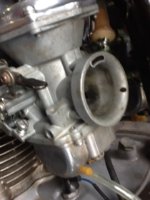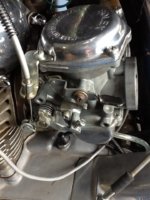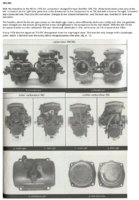connor1
XS650 Enthusiast
Trying to get my BS38's tuned. XS2 starts fine, idles nice and low, but as soon as you hit the throttle, it bogs down and dies..seems like a too rich condition and this is my assumption. Feel free to correct me if I am wrong. When I remove the carbs the throttle plate/valve is soaked in gas supporting my thought that this is a mixture issue.
The mixture screws are turned in all the way in an attempt to compensate, and the carbs have been completely torn down, soaked and ultrasonic'd. Mikes XS rebuild kits installed, with pilot jets at 42.5. Appears from the "carb guide" that these jets are on the rich end of the spectrum. I have also moved the main needle up to the top to position 1. Not that that will help, but desperate times...
As I have spent hours removing, tearing down and reinstalling these carbs and have not accomplished much, I am considering ordering new pilot jets. Any ideas on what size to order?
I am not sure how many sizes to go down to in this scenario..Should I buy 30's, 35's. 37.5? All are available on Mikes XS.
Thanks in advance for your expertise!
The mixture screws are turned in all the way in an attempt to compensate, and the carbs have been completely torn down, soaked and ultrasonic'd. Mikes XS rebuild kits installed, with pilot jets at 42.5. Appears from the "carb guide" that these jets are on the rich end of the spectrum. I have also moved the main needle up to the top to position 1. Not that that will help, but desperate times...
As I have spent hours removing, tearing down and reinstalling these carbs and have not accomplished much, I am considering ordering new pilot jets. Any ideas on what size to order?
I am not sure how many sizes to go down to in this scenario..Should I buy 30's, 35's. 37.5? All are available on Mikes XS.
Thanks in advance for your expertise!





